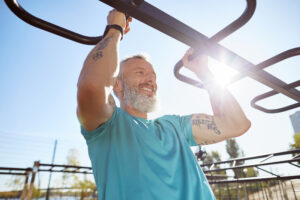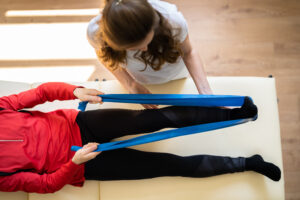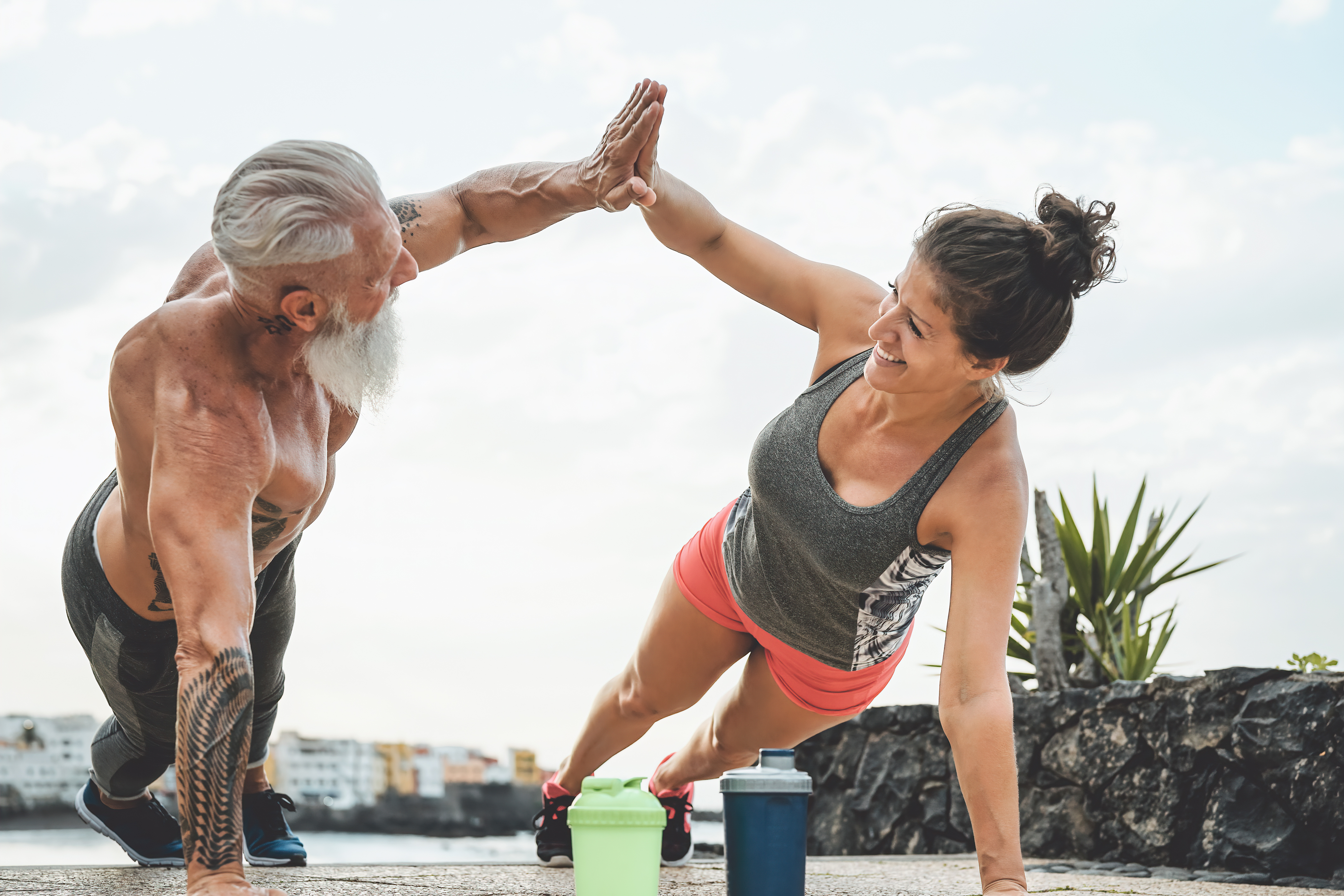Strength Training: Keep Your Body Strong at Any Age!
When training for a race, whether it’s our first 5K or 15th marathon, we hyper-focus on the miles. But what about strength training? How can we use it to support not only our running but overall health no matter our age? Strength and power are inextricably entwined. Today, let’s discuss this connection and find the best exercises for you. (Here’s a hint: the best exercise is the one you’ll love doing!)
Written by Coach Karen Peterson
Edited by Pavlína Marek
As the runs in your training plan get longer, the need to incorporate strength workouts, as well as runs that use shorter bursts of energy, becomes more important. Long runs can actually lead to muscle atrophy, which accelerates as we age. Whether you are 25 or 65, now’s the time to evaluate where you are at and make a plan to gain strength and power – and add balance and agility while we’re at it.
Is Sitting Down Strength Training?
Instead of ending with a quiz, we’re starting with one: how many times can you get in and out of a chair in 30 seconds? This provides a simple and practical baseline for your strength and power. This test gauges power and balance and is best used for our older runners.
Have you done the test? If you got the following results for your category, you’re golden:
- Men over 65: 12 or more repetitions
- Women over 65: 11 or more repetitions
If you got less than the standard number of repetitions or had trouble with keeping balance, it’s time to take up strength training.
Let’s Get Stronger!
If you are new to strength training, know that you don’t have to have a gym membership or even weights. Your own body can be your most efficient and effective tool, and think about the flexibility: you can incorporate planks, squats, pushups, and more into your workouts whether you are at home or out on a run.
(Here’s another incentive to strength train: longevity. There are a lot of unanswered questions about the link between living a longer, healthier life and strength training, but the research is catching up.)


Exercise bands are an amazing tool for building strength. What’s more, they are inexpensive, lightweight, and extremely easy to stash in your running bag (I have one that lives in my suitcase for work travel!). A 15 or so-minute routine can work important muscles to provide stability and stamina, targeting key areas like hips and glutes.
Finally, let’s talk glutes. The glute muscles play an incredibly important role in running strength, injury prevention, and stability. What’s more, strong glutes, along with ab muscles, stabilize your pelvis, helping to avoid hip, Illotibial (IT) band, and other issues that runners are prone to. What exercise do the glutes love the best? Squats of course! (Overachievers apply here.)
Final Words
No matter how short or long it takes to scroll to your year of birth, strength training will help you prevent injury, creating more power for race day, as well as every day—and maybe even live to see many more birthdays than you would without it! Keep it simple and enjoy your journey to strength!


